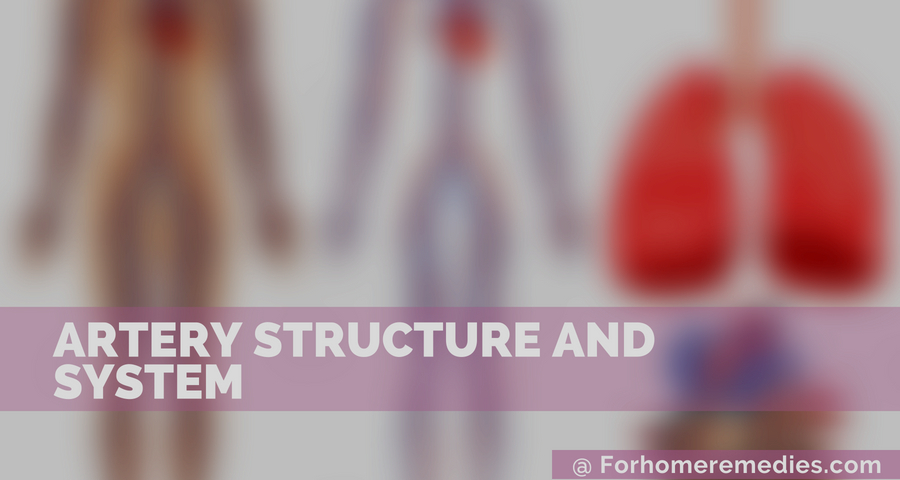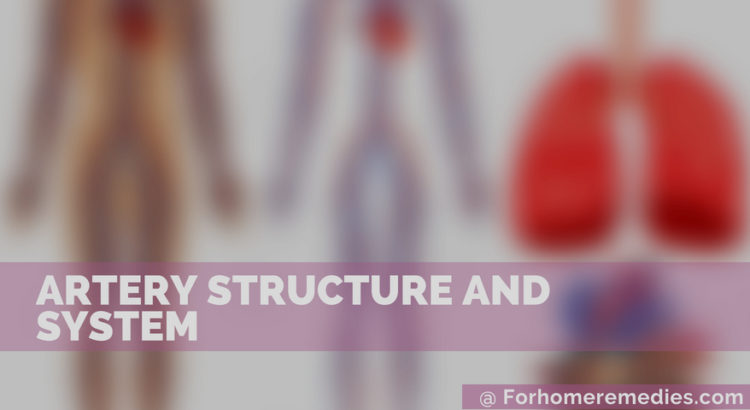Structure of Artery:
Artery or the blood vessel, which usually carry oxygenated blood to the organs from the heart, has a unique and delicate structure. The artery walls generally consist of three different layers with precise individuality; they are
- Tunica Adventitia
- Tunica Media, and
- Tunica Intima.
Among them, Tunica Adventitia is the harder outer covering of arteries and veins containing some other fragile parts like collagen, tissues, elastic fibers, etc. The Tunica Media found in the middle of these three layers that are made of elastic fibers either along with smooth muscles and made of the comparatively thicker layer than vein walls. On the other hand, the Tunica Intima layer exists in the extreme inner part of arteries and use to get direct contact with the blood while carrying them from the heart.
No matter it is a bigger artery or a thinner one, each artery contains these essential and exclusive layers in their entire structure. The Tunica Intima layer consists of the elastic membrane and smooth endothelial cells; the smoothness of this layer depends on the proportion of arteries as well as arterioles.
The main anatomy of arteries divided into two apparent sections and they are Gross Anatomy and Micro Anatomy. Each artery is filled with extracellular fluid and contains a hollow internal cavity in which the blood flows which is known as the lumen. The size of each artery is different in diameter, but the overall structure remains always the same.

System of Arteries:
The main system of arteries consist various part and most of them stay by pairing with other vessels. Paired or not, but each type of artery contain a specific system configuration of either Anastomosing or Finite. The anastomosing is the type of artery in which the inside cells of vessels connect with adjacent vascular trunk, while the finite arteries usually clogged with a thrombus and often lead to some dangerous cardiovascular issues in the system.
If you need to get an apparent idea on the whole system of arteries, you must get details of each type of artery whether it is paired or not, here we are referring the paramount artery types along with their exclusive features let’s take a look at them below-
Aorta:
Aorta is the chief and probably the largest artery in the human body, which originates from the left ventricle of the heart and gradually, extends down to the abdomen side, where the aorta is divided into two equal sized arteries. Like the utmost arteries, aorta also carries oxygenated blood from the heart to the other parts of our body and it contains a measurement of 21-30 mm proportion in size, depending on its connecting veins.
You can find two types of aorta arteries in every human body as in
- Ascending Aorta
- Descending Aorta
Among them, ascending aorta arteries are divided into right and left coronary arteries; while the descending aorta is divided into two different parts consisting thoracic part and abdominal part.
Thoracic part works in 4 different sections such as left bronchial arteries, esophageal arteries, posterior intercostals arteries and subcostal arteries. On the other hand, the abdominal part of descending aorta contains three different types of branches including various artery segments.
- Parietal branches
- Visceral branches
- Terminal branches
are those three apparent branches which include numbers or artery sections in their tiny torso, and lumbar arteries, median sacral artery, inferior phrenic arteries, middle suprarenal arteries, celiac trunk, superior mesenteric artery, renal arteries, gonadal arteries, inferior mesenteric artery, common iliac arteries, etc. are some mentionable once among them.
In the segment of Visceral branches of aorta artery, the Gonadal arteries exist in different forms in the structure of males and females, as males have testicular arteries, while females contain ovarian artery in their descending aorta artery.
Carotid Artery:
The carotid artery is a major blood vessel that is found on the neck side of humans and divided into two clear directions. Both carotid arteries connect brain, neck, and face by supplying blood from the heart through its carrying pipes. Between two of these carotid arteries, one is located on the right side of our neck and the other one is found on the left side of our neck.
Each part of these arteries contains two clear as well as significant sections and they are the internal carotid and the external carotid portions. The internal part supplies oxygenated blood to our brain cells, while the external part carries blood to the face and neck from the heart.
Like other major arteries, carotid artery also contains three apparent layers of Intima, Media, and Adventitia. This crucial artery contains a bulb named carotid sinus that opens up at the main branch point and controls the blood pressure by regulating flow rate in the blood vessels.
As the carotid artery connects the main points of our body like brain, neck, etc. thus a mild amount of interruption could lead some deadly outcome to our health, and stroke, artery stenosis, vasculitis, artery atherosclerosis, temporal arteritis, hypersensitivity syndrome, etc. are some mentionable ones among them.
Vertebral Artery and Its Syndrome:
Vertebral artery is one more major artery found in the neck portion of human and branches from the posterosuperior segment of the subclavian artery. Vertebral artery works together with carotid artery and helps to supply blood to the brain cells from our heart. As the proportion or vertebral artery is not much wide, thus it usually supplies 20% of blood to the brain cells and keeps the rest 80% for the carotid artery to carry.
If you look closely to the structure of this crucial artery, you will find four clear divisions and they ascend through the foramina of the transverse process that is related to the cervical vertebrae directly.
Vertebral artery usually enters the cranium portion in the route of the foramen magnum and eventually unites with the opposite vertebral artery to emerge with a new form of the basilar artery.
Syndrome of Vertebral Artery:
As the vertebral artery stays close to the vertebral section of our torso and connects to the facet joints, it often gets obstructed by the mildest problem of osteophyte formation or tiniest injury in the facet joint.
The disruption in a vertebral artery could happen for stresses on the different parts of arteries or for some non-penetrating injuries, according to the syndrome details of this essential artery. The apparent reasons for vertebral artery syndromes are as follows-
- Getting stress on transverse procedure at the C1, C2, C6, etc. points
- Having issues at the access point of the arteries into our skull
- Getting any injury on the bony canals of the vertebral transverse process
- Vertigo
- Dizziness
- High BP
- Chronic fatigue
- Nausea
- Visual disturbance
- Tinnitus
- Drop attacks
- And stroke
As these syndromes are not visible openly and most of the times feel by the sufferers only, they need to take proper attention at their initial stage with some mild treatments of vertebral artery syndrome.
